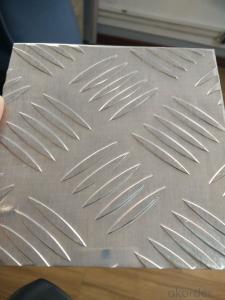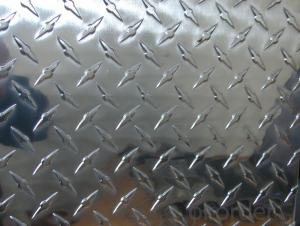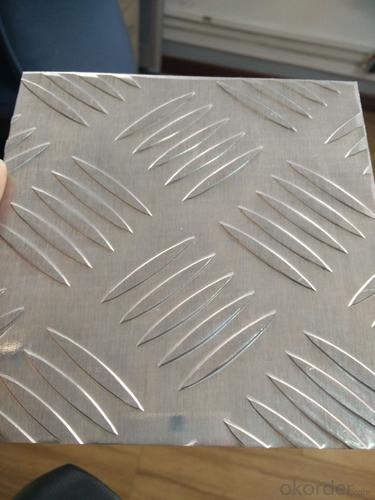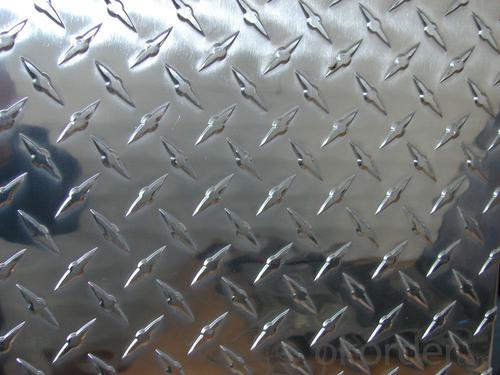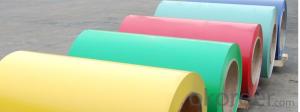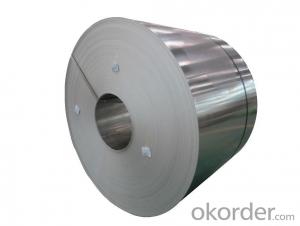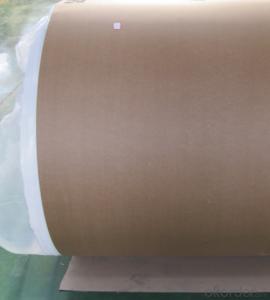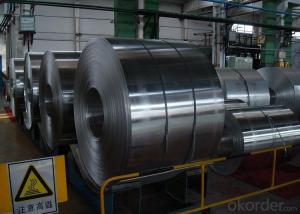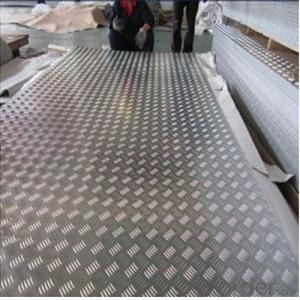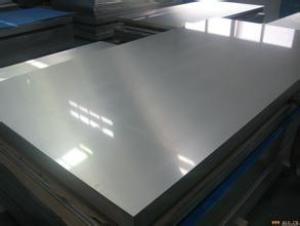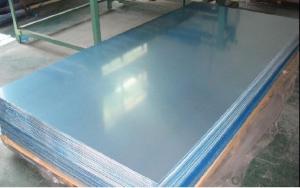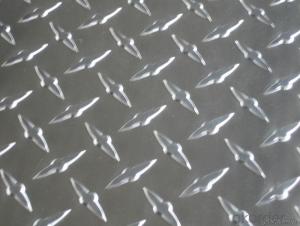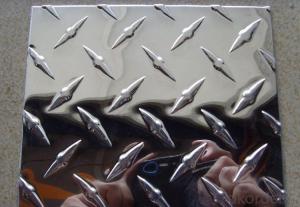Sheets of Black Diamond Plate Aluminum - Wholesalers and Materials & Equipment
- Loading Port:
- Shanghai
- Payment Terms:
- TT or LC
- Min Order Qty:
- 5 m.t.
- Supply Capability:
- 100000 m.t./month
OKorder Service Pledge
OKorder Financial Service
You Might Also Like
Aluminium is a relatively soft, durable, lightweight,ductile and malleablemetalwith appearance ranging from silvery to dull gray, depending on the surfaceroughness. It is nonmagnetic and does not easily ignite. A fresh film ofaluminium serves as a good reflector (approximately 92%) of visible light and an excellent reflector(as much as 98%) of medium and far infrared radiation. The yield strengthof pure aluminium is 7–11 MPa, while aluminium alloys have yield strengthsranging from 200 MPa to 600 MPa. Aluminium has about one-third the density and stiffness of steel.It is easily machined, cast, drawnand extruded.
Aluminum coil/sheet have been used in the field of construcction and decoration(garage doors,ceiling etc.),electronic appliances,lignting decoration, air-condition air pipes,sandwichpanels and drainages etc.
1.Aluminum Treadplate(5 BARS/ DIAMOND/STUCCO) :
Aluminum Treadplate is widely used for decorative purposes in construction, and builing. Aluminum Treadplate is also very commonly used for anti-shippery purposes in vehicles and pulic places.
2. Specification of Aluminum Treadplate(5 BARS/ DIAMOND/STUCCO)
Alloy: 1XXX,3XXX,5XXX
Temper: H14, H16, H18, H22, H24, H26, H32, O/F
Thickness: 1mm-4mm
Width: 800Mm-1500mm
3. Aluminum Treadplate(5 BARS/ DIAMOND/STUCCO)
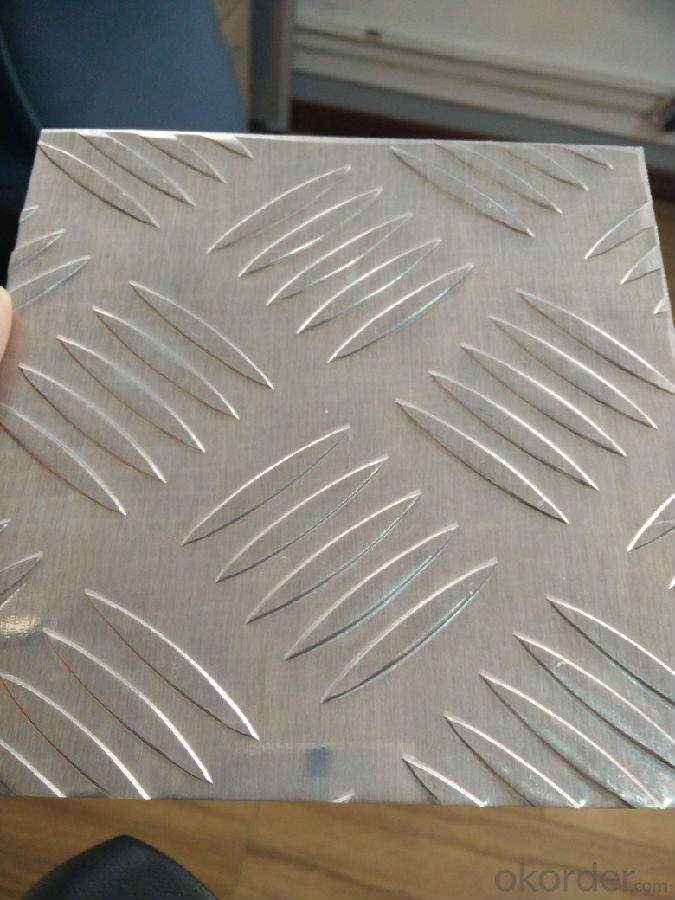
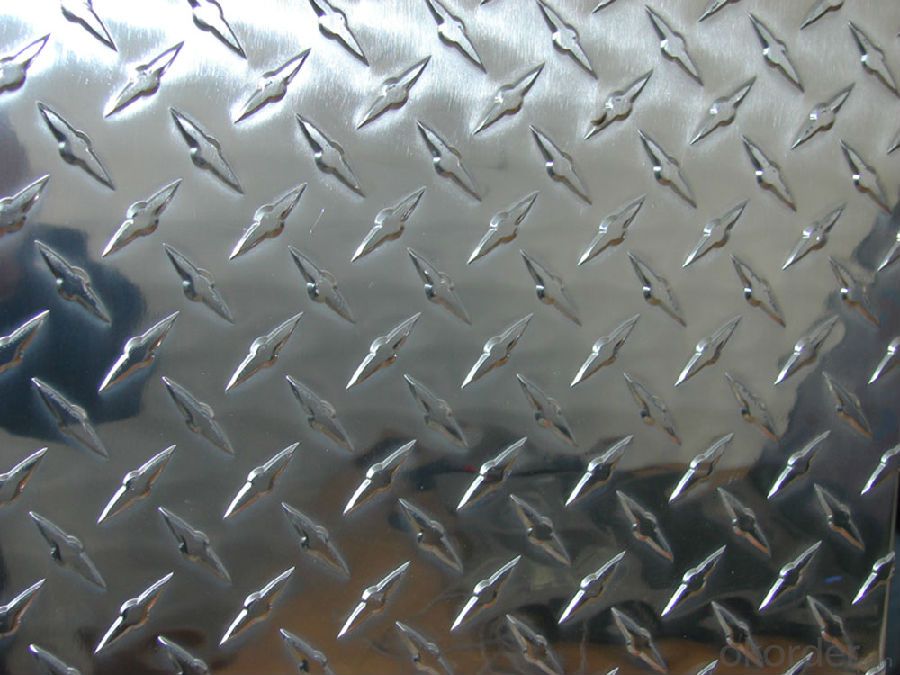
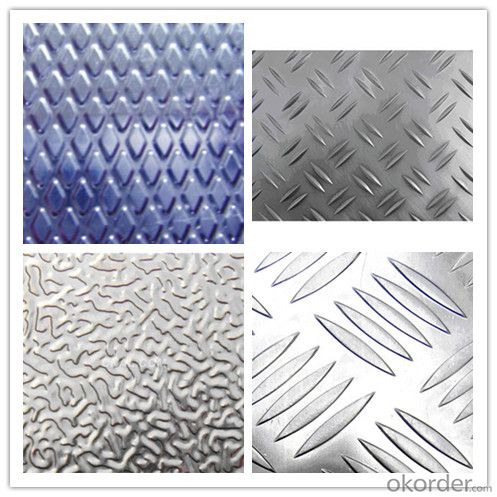
4 Our Advantages
1. Excellent quality of products
2. Quick delivery
3. Best service to clients
4. BV,SGS avalible
5. No buckle o waveness
6. Tension leveling
7. Certificate of Origin
8. FormeA,E
In the field of steel material, the aluminum plate has been a favorite target for many multi-users as its rich resources and low prices. In this area there are many aluminum classifications, which, as aluminum checker plate looks more beautiful pattern aluminum, metal color is gorgeous, decorative effect is more obvious reasons, it is widely loved by the users.
In general, the use of the material is mainly due to the different nature of the material, classified to decide. Now, there are three aluminum checker plate classifications, ordinary aluminum checkered plate, aluminum-magnesium alloy tread plates, aluminum alloy fierce pattern sheet. Let me tell the difference between thin and are among the use of under it!
The first one is: ordinary aluminum checkered plate:
Ordinary aluminum checkered plate through to 1060 series aluminum as aluminum patterns obtained on the basis of material processing. From the price, it is among the most expensive of the three, is the most widely used application pattern aluminum, special circumstances are basically not able to choose these. We now are using this common packaging ordinary aluminum checkered plate.
The second: aluminum and Meng alloy checkered plate
Meng aluminum alloy checkered plate on the aluminum content of the degree has deepened a little, is the most basic 3003 series aluminum material obtained by processing pattern aluminum. This pattern aluminum has a feature that can rust; it is usually applied in the need to prevent rust places, such as cars trucks, cold floor and other places.
Third: aluminum-magnesium alloy plate pattern
Aluminum content aluminum-magnesium alloy plate pattern is the highest; it is generally used as the basis for the 5000 series aluminum material obtained by processing pattern aluminum. This pattern aluminum not only in hardness to withstand very powerful gravity, also taking into account the rust, corrosion dual function, usually used in this particular ship damp places.
No matter which of the above aluminum checker plate, in the usual clean-up time it is also to be noted.
First, do not force clean up with a hard scrubbing brush, because not all of the hardness of aluminum materials are qualified in.
Second, do not use strong alkaline, strong acidic detergents to clean aluminum, because not all of the acid aluminum materials are qualified for.
What is the best way to clean aluminum checker plate?
Is the first with plenty of water to clean the surface of the aluminum plate pattern, and then dipped in a neutral detergent has been diluted over the operation with a soft cloth and gently wipe the surface of the aluminum plate pattern, then cleaned, but also with plenty of water to wash again pattern aluminum until all the above neutral detergent to clean. With particular attention to the point is, do not use more than 40 degree water.
- Q: Are aluminum sheets resistant to vibration?
- Yes, aluminum sheets are generally resistant to vibration due to their inherent strength and durability. The high stiffness-to-weight ratio of aluminum, along with its ability to dampen vibrations, makes it an ideal material for applications requiring vibration resistance.
- Q: What is an aluminum sheet?
- An aluminum sheet is a flat piece of aluminum that is typically rectangular in shape and has a consistent thickness. It is made from aluminum, which is a lightweight and versatile metal known for its corrosion resistance and high strength-to-weight ratio. Aluminum sheets are commonly used in various industries and applications, such as construction, transportation, aerospace, and manufacturing. They can be further processed, cut, shaped, or formed to meet specific requirements. Aluminum sheets are available in different grades and finishes, including smooth, brushed, and textured surfaces, providing a wide range of options for different uses.
- Q: Can aluminum sheet be used for electrical enclosures?
- Yes, aluminum sheet can be used for electrical enclosures. Aluminum is a popular choice for electrical enclosures due to its excellent conductivity, lightweight nature, and corrosion resistance. It provides effective shielding against electromagnetic interference and offers good heat dissipation properties. Additionally, aluminum is easily formable, allowing for the creation of complex shapes and designs. Overall, aluminum sheet is a suitable material for electrical enclosures and is commonly used in various industries including electronics, telecommunications, and power distribution.
- Q: This question asks for a comparison between the benefits and drawbacks of utilizing products made from recycled aluminum.
- <p>Advantages of using recycled aluminum products include reduced energy consumption, lower greenhouse gas emissions, and a decrease in the need for raw material extraction. It also promotes waste reduction and supports a circular economy. Disadvantages might include potential quality concerns, as recycled aluminum might not always meet the same strength and durability standards as new aluminum. Additionally, there can be higher initial costs associated with recycling processes and the need for advanced sorting and processing technologies.</p>
- Q: What are the different types of surface treatments available for aluminum sheets?
- There are several different types of surface treatments available for aluminum sheets, each serving a specific purpose and providing unique characteristics. Some of the most common surface treatments for aluminum sheets include anodizing, painting, powder coating, and polishing. Anodizing is a process that involves the formation of a thick oxide layer on the surface of the aluminum sheet. This treatment not only enhances the appearance of the sheet by providing a variety of colors, but also improves its corrosion resistance and durability. Anodized aluminum sheets are widely used in architectural applications, automotive parts, and electronics. Painting is another popular surface treatment for aluminum sheets. It involves applying a layer of paint on the surface to enhance its appearance and provide additional protection against corrosion and wear. Painted aluminum sheets are commonly used in signage, building facades, and decorative applications. Powder coating is a type of surface treatment that involves applying a dry powder to the aluminum sheet and then heating it to create a protective layer. This treatment offers excellent durability, resistance to weathering, and a wide range of color options. Powder coated aluminum sheets are commonly used in the construction industry, as well as for automotive parts and appliances. Polishing is a surface treatment that involves buffing the aluminum sheet to create a smooth and reflective surface. This treatment enhances the aesthetics of the sheet, making it ideal for decorative applications such as furniture, jewelry, and architectural accents. Overall, the choice of surface treatment for aluminum sheets depends on the desired appearance, functionality, and application requirements. Each treatment offers unique benefits and characteristics, allowing for versatility and customization in various industries.
- Q: What is the typical torsional strength of aluminum sheets?
- The typical torsional strength of aluminum sheets can vary depending on various factors such as the alloy composition, thickness, and manufacturing process. However, aluminum generally possesses good torsional strength, making it suitable for a wide range of applications.
- Q: What are the different methods of surface protection for aluminum sheet?
- There are several different methods of surface protection for aluminum sheet that can be employed to enhance its durability and resistance to various external factors. One common method is anodizing, which involves creating a thick oxide layer on the surface of the aluminum through an electrochemical process. Anodizing provides corrosion resistance, improves wear resistance, and allows for color customization through the use of dyes. Another method is powder coating, where a dry powder is applied to the aluminum surface and then heated to create a durable and protective layer. Powder coating offers excellent resistance to chemicals, UV rays, and scratches, and it also provides a wide range of color options. Laminating is another technique used to protect aluminum sheets. In this method, a thin layer of protective film is applied to the surface, acting as a barrier against scratches, dirt, and moisture. Laminating is commonly used for aluminum sheets that require temporary protection during transportation or storage. Chemical conversion coating is yet another method employed to protect aluminum surfaces. This involves treating the aluminum with a chemical solution that creates a thin layer of protective coating. The coating not only enhances corrosion resistance but also improves paint adhesion. Furthermore, clear coating can be applied to aluminum sheets to provide a protective layer without altering the appearance of the metal. Clear coatings can be either solvent-based or water-based and offer resistance against corrosion, scratches, and UV rays. Lastly, mechanical finishes such as brushing or polishing can be used to protect aluminum surfaces. These finishes create a smooth and aesthetically pleasing surface while also providing some level of protection against corrosion and wear. Overall, these various methods of surface protection for aluminum sheet offer different levels of durability, corrosion resistance, and aesthetic options, depending on the specific requirements and applications.
- Q: This question asks for the various dimensions in which aluminum sheets can be obtained.
- <p>Aluminum sheets are available in a variety of sizes depending on the manufacturer and the specific application. Common sizes include 12x12 inches, 24x24 inches, 4x8 feet, and 4x10 feet. Thickness can range from 0.010 inches (0.25 mm) for thin sheets to 0.5 inches (12.7 mm) for thicker plates. Custom sizes can also be ordered, and the availability of these sizes may vary by supplier. It's important to check with the specific supplier for the exact sizes they offer, as options can differ.</p>
- Q: aluminum is produced by breaking down the compound...
- Bauxite is the most important aluminum ore. It consists largely of the minerals gibbsite Al(OH)3, boehmite γ-AlO(OH), and diaspore α-AlO(OH), together with the iron oxides goethite and hematite, the clay mineral kaolinite and small amounts of anatase TiO2. You have an unusual way of asking that question. Aluminum is an element and cannot be broken down accept to sub-atomic particles.
- Q: What is the typical thermal conductivity of aluminum sheets?
- The typical thermal conductivity of aluminum sheets is approximately 205-230 watts per meter-kelvin (W/mK). This high thermal conductivity makes aluminum an excellent heat conductor, which is why it is commonly used in applications where heat transfer is important, such as in heat sinks, power transmission lines, and cooking utensils.
Send your message to us
Sheets of Black Diamond Plate Aluminum - Wholesalers and Materials & Equipment
- Loading Port:
- Shanghai
- Payment Terms:
- TT or LC
- Min Order Qty:
- 5 m.t.
- Supply Capability:
- 100000 m.t./month
OKorder Service Pledge
OKorder Financial Service
Similar products
Hot products
Hot Searches
Related keywords
